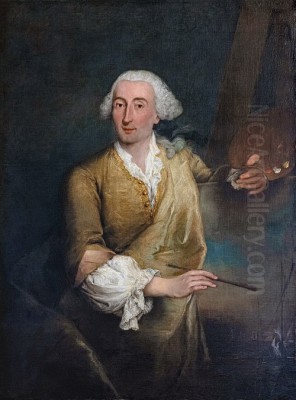
Francesco Guardi stands as one of the last great painters of the Venetian School, an artist whose brush captured not just the stunning architecture of Venice, but its very atmosphere – the shimmering light, the bustling life, and the poignant sense of fading grandeur. Living and working during the 18th century, a period of both dazzling spectacle and underlying decline for the Serene Republic, Guardi developed a style distinct from his contemporaries, one that favoured evocative suggestion over precise detail, earning him recognition centuries later as a precursor to Impressionism.
An Artistic Heritage
Born in Venice in 1712, Francesco Lazzaro Guardi was immersed in art from birth. His father, Domenico Guardi (1678–1716), was a painter of Baroque sensibility, originally from the Trentino region. Francesco's older brother, Giovanni Antonio Guardi (1699–1760), often known as Gianantonio, was also a respected painter, particularly noted for his religious and mythological works in the Rococo style. Another brother, Niccolò Guardi, also pursued painting. The family operated a busy workshop, producing a variety of works.
Francesco's early training took place within this familial studio. He learned alongside his brothers, likely absorbing techniques for figure painting, religious scenes, mythological narratives, and even floral studies. Initially, he worked primarily as a figure painter, collaborating closely with the more established Gianantonio on numerous commissions, including altarpieces and decorative cycles. Distinguishing Francesco's early hand from his brother's can be challenging for art historians, as their collaboration was extensive until Gianantonio's death.
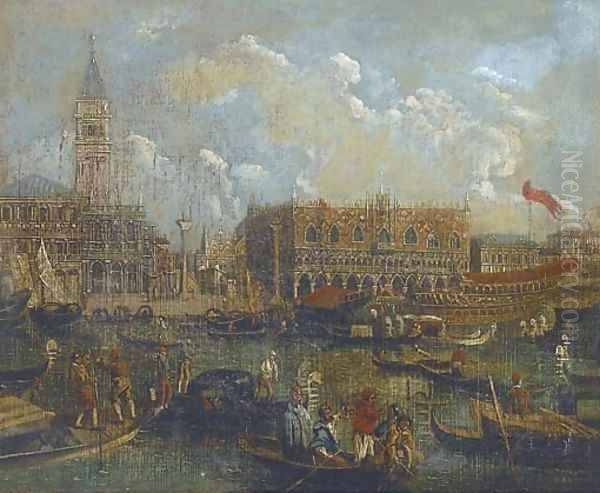
These formative years exposed Francesco to the prevailing artistic currents in Venice. The city was a vibrant hub, home to masters like Giovanni Battista Tiepolo, the great decorator whose frescoes adorned palaces and churches with unparalleled lightness and theatricality. The influence of earlier Venetian masters, perhaps including the Ricci family – Sebastiano Ricci and his nephew Marco Ricci, known for their landscape and history paintings – may also have played a role, possibly through family connections or workshop practices. Some sources suggest Francesco learned a specific "small dot technique," perhaps referring to the broken brushwork or pittura di tocco that would later characterize his style, potentially from family members or associates like Michele Marieschi, another Venetian view painter who sometimes collaborated with Gianantonio.
The Shift to Landscape
While Francesco produced religious paintings throughout his early career, these works did not bring him significant fame. A pivotal moment occurred around 1760 with the death of his elder brother, Gianantonio. Francesco, now in his late forties, effectively took over the family workshop, often working alongside his remaining brother Niccolò. It was around this time, or perhaps slightly earlier in the mid-1750s, that Francesco began to dedicate himself seriously to vedute, or view paintings, the genre for which he would become most famous.
The towering figure in Venetian veduta painting at the time was Giovanni Antonio Canal, better known as Canaletto. Canaletto's meticulously detailed, sunlit views of Venice, often employing a camera obscura for topographical accuracy, were immensely popular, especially among foreign visitors on the Grand Tour. Guardi was undoubtedly aware of Canaletto's success and was influenced by his work, particularly in his choice of subjects and compositions. Some of Guardi's earlier views clearly echo Canaletto's approach to architectural rendering.
However, Guardi quickly forged his own path. Where Canaletto aimed for clarity, precision, and a sense of enduring stability, Guardi pursued atmosphere, movement, and the ephemeral qualities of light and water. His Venice is less a perfectly rendered stage set and more a living, breathing entity, shimmering with reflections and veiled in mist.
A Unique Vision: The Guardi Style
Francesco Guardi's mature style is often described as Rococo, but it possesses a unique sensibility that transcends easy categorization. His brushwork became increasingly free and spirited, employing rapid dabs, flicks, and calligraphic strokes – the pittura di tocco – to suggest form rather than delineate it precisely. This technique created a sparkling, vibrant surface texture that captured the play of light on water, the movement of clouds, and the fleeting gestures of figures populating his scenes.
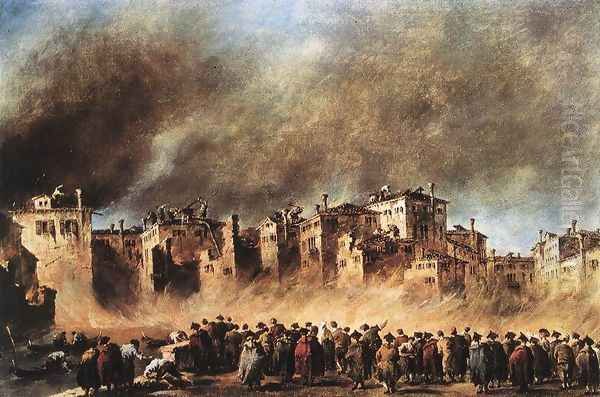
His palette often favoured cooler tones – silvery blues, greys, and greens – contrasting with the warmer, sunnier canvases typical of Canaletto. He masterfully manipulated light and shadow, not just for descriptive purposes, but to evoke mood and emotion. His views often possess a melancholic, almost dreamlike quality, hinting at the fragility of Venice's beauty and the passage of time. This atmospheric approach led some contemporaries to criticize his work as unfinished, too sketchy, or unstable compared to the precise linearity then in vogue.
Guardi didn't just paint the famous landmarks like Piazza San Marco or the Rialto Bridge; he explored quieter corners of the city, hidden canals, and the vast expanse of the lagoon. His figures, though small, are rendered with remarkable vivacity, capturing the energy of festivals, the bustle of daily life, or the solitary grace of a gondola gliding across the water. He painted not just the city's glorious facade but also its more intimate, sometimes decaying, aspects.
Capricci: Landscapes of the Imagination
Beyond the topographical views, Guardi excelled in painting capricci. These were imaginary or fantasy landscapes, often incorporating classical ruins, rustic buildings, dramatic coastlines, and picturesque figures. While the genre had roots in earlier landscape traditions, Guardi infused his capricci with his characteristic atmospheric sensibility and fluid brushwork.
These works allowed Guardi greater freedom of invention. He could combine architectural elements in novel ways, create dramatic juxtapositions of nature and ruins, and explore purely poetic or narrative themes. Though not considered as prestigious as history painting by the official Venetian Academy, his capricci demonstrate his skill in composition, colour, and figure painting, often imbued with a sense of nostalgia or romantic fantasy. They showcase his imaginative power and his ability to create evocative moods entirely independent of depicting a specific location.
Representative Works and Themes
Guardi's prolific output includes numerous views of Venice and its surroundings, festival scenes, and capricci. Among his most celebrated works are:
Views of Piazza San Marco and the Grand Canal: Like Canaletto, Guardi frequently depicted Venice's main public square and its central waterway, but always with his unique focus on light, atmosphere, and movement. His View of San Marco in Venice captures the vastness of the square and the ever-changing sky above. Views along the Grand Canal, such as The Grand Canal with Santa Lucia and Santa Maria di Nazareth (formerly near the Campo della Carità), showcase his fascination with water, reflections, and the daily life along the city's main artery.
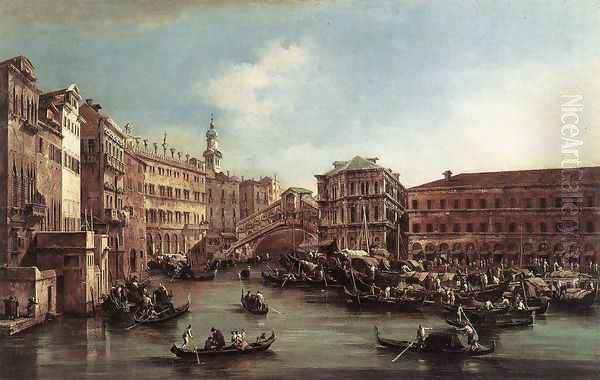
Lagoon Views: Guardi was perhaps the supreme painter of the Venetian lagoon. Works like Gondola on the Lagoon (c. 1765), now in the Museo Poldi Pezzoli, Milan, are masterpieces of poetic suggestion. With minimal detail and an emphasis on silvery light and expansive water, he evokes a sense of serene melancholy and timelessness.
Festival Scenes: Guardi documented important Venetian ceremonies and festivities. The Doge's Feasts (or Feste Ducali) is a series of twelve canvases depicting the annual ceremonies presided over by the Doge, commissioned probably around 1763 to commemorate the election of Doge Alvise IV Mocenigo. These paintings capture the pomp and pageantry of events like the Doge's procession to San Zaccaria or the Thursday before Lent festival in the Piazzetta, all rendered with Guardi's characteristic flickering light and animated crowds.
Cannaregio Views: He painted views of less central areas, like the Cannaregio Canal, sometimes seen from specific viewpoints like the balcony of the Ca' Rezzonico, demonstrating his interest in varied perspectives and light effects across the city.
Capricci: Numerous capricci survive, often featuring crumbling arches, rustic towers, lagoonside ruins, and small, active figures. Capriccio View of Campo San Polo (c. 1780) blends real Venetian elements with imaginative composition. These works highlight his skill in creating idealized yet emotionally resonant scenes.
Early Religious Works: While less famous, early works like The Martyrdom of St. Catherine of Alexandria (c. 1750) or paintings depicting biblical stories like Manna from Heaven show his initial grounding in figure painting and religious narrative, albeit already hinting at a sensitivity to landscape and light.
A Life on the Margins?
Despite his undeniable talent and prolific output, Francesco Guardi seems to have occupied a somewhat peripheral position in the official Venetian art world for much of his life. Unlike Canaletto, who achieved international fame and commanded high prices, Guardi's looser, more atmospheric style found less favour with patrons seeking precise souvenirs of their travels.
Evidence suggests a life of modest means. He married relatively late in life, at the age of 48, to Maria Mathea Pagani in 1757. It wasn't until 1784, when he was already in his seventies, that he was finally elected to the prestigious Venetian Academy of Painting and Sculpture, and even then, it was as a painter of "prospettive" (perspective views), a category perhaps considered less esteemed than history painting. This late recognition hints at a career spent somewhat outside the mainstream circles of patronage and academic approval.
Legacy and Rediscovery
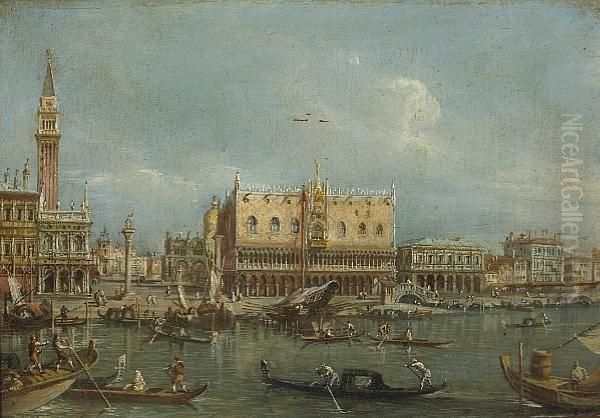
Francesco Guardi died in Venice on January 1, 1793, just a few years before the fall of the Venetian Republic itself in 1797. In the decades immediately following his death, his reputation remained overshadowed by that of Canaletto. His free brushwork and emphasis on subjective atmosphere were out of step with the Neoclassical tastes that dominated the early 19th century.
The rediscovery and appreciation of Guardi began later in the 19th century, coinciding with the rise of Impressionism. Artists and critics began to recognize the modernity of his vision – his fascination with capturing fleeting effects of light and weather, his suggestive brushwork, and his ability to convey emotion through landscape. Painters like Claude Monet and J.M.W. Turner admired his work, seeing in him a kindred spirit who prioritized visual sensation and atmospheric truth over topographical accuracy. John Constable, the great English landscape painter, was also influenced by the Venetian tradition that Guardi represented.
Today, Guardi is acknowledged as one of the most original and poetic painters of the 18th century. He is seen not merely as a follower of Canaletto, but as an artist with a distinct and highly personal vision. He captured the dazzling beauty of Venice, but also its unique melancholy, the sense of a glorious past mingling with an uncertain future. His paintings offer an intimate, lyrical portrait of the city in its final decades as an independent republic.
His works are now treasured in major museums worldwide, including the Metropolitan Museum of Art in New York, the National Gallery of Art in Washington D.C., the Louvre in Paris, the Alte Pinakothek in Munich, the Gemäldegalerie in Berlin, the National Gallery in London, and, of course, in Venice itself, particularly at the Gallerie dell'Accademia and the Museo Correr, as well as Ca' Rezzonico (Museum of 18th Century Venice). While there are no widely documented cases of major lost masterpieces comparable to searches for works by Leonardo da Vinci, the provenance of individual pieces can sometimes be complex, as illustrated by the restitution case of the painting Palace Stairs, looted during World War II and eventually returned from Poland to the Staatsgalerie Stuttgart in Germany.
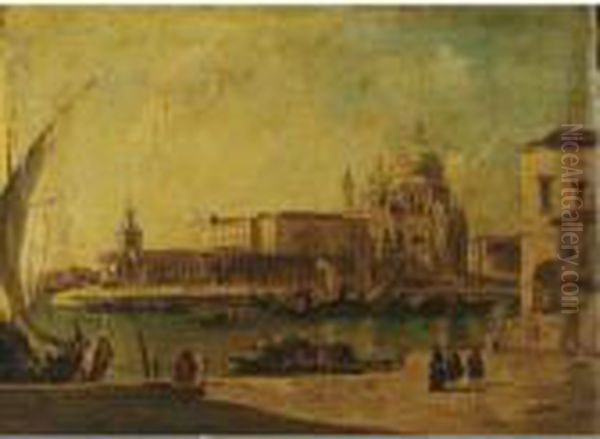
Francesco Guardi remains a pivotal figure, the last great vedutista of the Venetian school. His legacy lies in his ability to transform views of a city into deeply felt experiences, using light, colour, and a remarkably fluid technique to convey the very soul of Venice – its shimmering surfaces, its transient moments, and its enduring, captivating spirit.